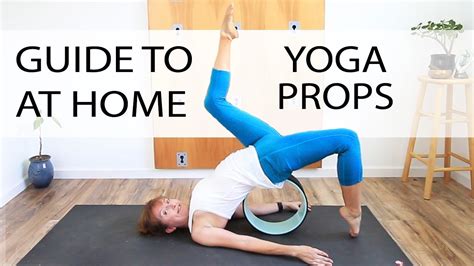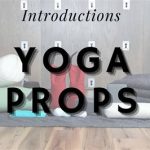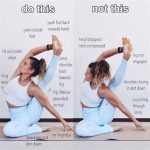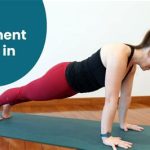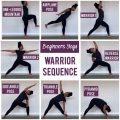Comprehensive Guide to Yoga Props: Enhancing Your Practice from Beginner to Advanced
Yoga props are essential tools that can make yoga accessible for everyone, whether you’re just starting or are an experienced practitioner. They help deepen stretches, provide support, and ensure proper alignment. Understanding how and when to use props can significantly enhance your yoga journey, prevent injury, and open up a wider range of poses. In this guide, we will explore various yoga props, their benefits, and practical ways to incorporate them into your practice.
Introduction
Yoga is a diverse practice, accessible to anyone willing to explore it, but the journey can be challenging without the right tools. Yoga props like blocks, straps, blankets, and bolsters are not just for beginners; they support flexibility, balance, and alignment, improving both the depth and safety of poses. This guide aims to demystify the use of props, presenting them not as a crutch but as a way to enhance the practice for yogis of all levels. Whether your goal is to find stability in a pose or to deepen your stretches, yoga props can help you reach those milestones.
Key Concepts
- Alignment: Yoga props aid in achieving correct posture and alignment, reducing the risk of injury.
- Adaptability: Props make difficult poses accessible by modifying stretches and reducing strain.
- Progression: They enable yogis to explore poses at their own pace, gradually increasing difficulty.
- Support: Props provide the needed support to maintain poses for longer durations, enhancing strength and flexibility.
- Restoration: In restorative yoga, props facilitate relaxation by supporting the body during long-held poses.
Historical Context
Although yoga dates back thousands of years, the use of props is relatively modern. Pioneered by B.K.S. Iyengar in the mid-20th century, yoga props were introduced to make yoga more inclusive and accessible. Iyengar’s approach allowed practitioners of all ages, abilities, and body types to experience the benefits of yoga safely. His philosophy emphasized the importance of precision and alignment, which props could support. Since then, yoga props have become standard tools in most yoga studios and home practices.
Current State Analysis
Today, yoga props are available in nearly every yoga studio and are widely used in different styles of yoga, such as Iyengar, restorative, and yin yoga. While once viewed as “cheats,” they are now recognized as essential aids to deepen the practice for everyone. Brands have expanded their offerings, creating eco-friendly and ergonomic designs that cater to specific needs.
With the growing popularity of online yoga classes, many practitioners now equip their home practice with essential props. Accessibility and affordability have improved, though knowledge on proper usage remains uneven. Some yogis hesitate to use props, thinking they make the practice less authentic or less challenging. Instructors and practitioners are increasingly working to destigmatize their use, emphasizing the idea that props do not make a practice less advanced.
Practical Applications
Here is a breakdown of common yoga props and how they can be used in everyday practice:
Yoga Blocks
Blocks provide stability and help maintain alignment, especially in standing poses.
- Example 1: In Triangle Pose (Trikonasana), placing a block under your hand can help prevent over-stretching and misalignment.
- Example 2: In Seated Forward Fold (Paschimottanasana), sitting on a block can reduce strain on the hamstrings and spine.
Yoga Straps
Straps assist with flexibility and can be used to deepen stretches.
- Example 1: In Reclined Hand-to-Big-Toe Pose (Supta Padangusthasana), a strap helps lengthen the hamstrings when reaching for the foot is challenging.
- Example 2: In Shoulder Openers, a strap helps maintain a safe distance between hands, preventing shoulder strain.
Bolsters
Bolsters offer support in restorative yoga and aid in relaxation.
- Example 1: In Supported Bridge Pose (Setu Bandha Sarvangasana), placing a bolster under the sacrum offers gentle back support.
- Example 2: In Child’s Pose (Balasana), placing a bolster between the legs provides chest and belly support.
Blankets
Blankets can be used for cushioning sensitive areas like the knees, or for added support in seated poses.
- Example 1: In Headstand Prep, using a folded blanket under the head provides extra cushioning.
- Example 2: In Lotus Pose (Padmasana), a blanket placed under the hips helps improve spinal alignment.
Case Studies
The following examples illustrate how yoga props have made a significant impact on practitioners:
| Case | Issue | Prop Used | Outcome |
|---|---|---|---|
| Beginner Yogi with Limited Flexibility | Difficulty in forward bends and standing poses | Yoga Blocks, Straps | Improved range of motion, better alignment, and reduced strain on lower back |
| Senior Practitioner with Joint Pain | Knee pain in seated poses | Blankets, Bolsters | Increased comfort and ability to hold poses for longer durations |
| Advanced Practitioner Working on Inversions | Instability in handstands | Yoga Blocks | Improved balance, enabling longer holds in inversions |
Stakeholder Analysis
Yoga props cater to a wide range of users, from complete beginners to advanced yogis, seniors, people with injuries, and even professional athletes. Different stakeholders benefit from props in unique ways:
- Beginners: Props provide foundational support, helping new yogis build confidence in challenging poses.
- Seniors: Older practitioners benefit from added stability, reducing strain on joints and muscles.
- Instructors: Props allow teachers to offer variations that cater to students’ diverse needs in group classes.
- Therapists: Physical therapists and rehabilitation specialists use props in therapeutic settings to aid recovery.
Implementation Guidelines
Incorporating props into your practice should be both thoughtful and consistent. Below are some tips for successfully implementing yoga props:
- Start Simple: If you’re new to yoga props, begin with a block or strap to aid in familiar poses like Downward Dog or Seated Forward Fold.
- Personalize Usage: Recognize your body’s limitations and select props accordingly. For example, if you have tight hamstrings, using a block can help you maintain form without strain.
- Seek Guidance: Work with a yoga instructor to ensure you are using the props correctly. Misuse can lead to improper alignment and discomfort.
- Consistency: Regularly incorporating props can help you progress faster and more safely in your practice.
Ethical Considerations
As props become more mainstream, there are some ethical concerns to address:
- Material Sourcing: Yoga practitioners should consider the environmental impact of the props they use. Opt for sustainable materials such as cork, bamboo, or organic cotton.
- Inclusivity: Yoga props should remain accessible and affordable to all practitioners. The commercialization of props should not alienate yogis who may not be able to afford high-end products.
- Authenticity: Some purists argue that props dilute the traditional aspects of yoga. However, it’s essential to emphasize that the use of props does not detract from the integrity of the practice but rather enhances accessibility.
Limitations and Future Research
While yoga props offer numerous benefits, their use is not without limitations. Some practitioners may become too reliant on props, which could inhibit natural progression in poses. There is also a gap in standardized guidelines for prop usage, leading to inconsistencies across yoga schools and instructors. Future research could explore the long-term effects of prop usage, particularly for injury prevention and rehabilitation.
Moreover, as the popularity of yoga grows globally, there is potential for the development of more advanced props tailored to specific body types, injuries, and styles of practice. The evolution of smart props that provide real-time feedback on alignment could also be an area of interest for research and development.
Expert Commentary
Incorporating yoga props into one’s practice is a thoughtful way to deepen and enrich the yoga experience. Props empower practitioners to safely explore their bodies, test their limits, and ultimately, enhance their well-being. While the debate over the authenticity of props continues, the consensus is clear: they are invaluable tools for ensuring accessibility and precision in yoga. Ultimately, props encourage mindfulness and adaptability, allowing practitioners to connect with their bodies in a meaningful and sustainable way.
